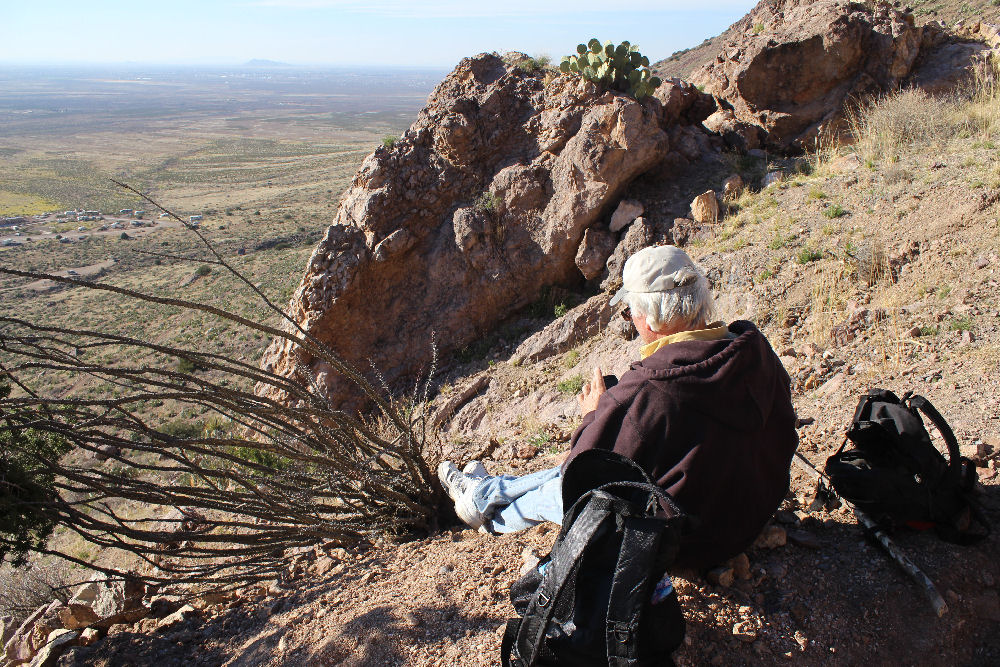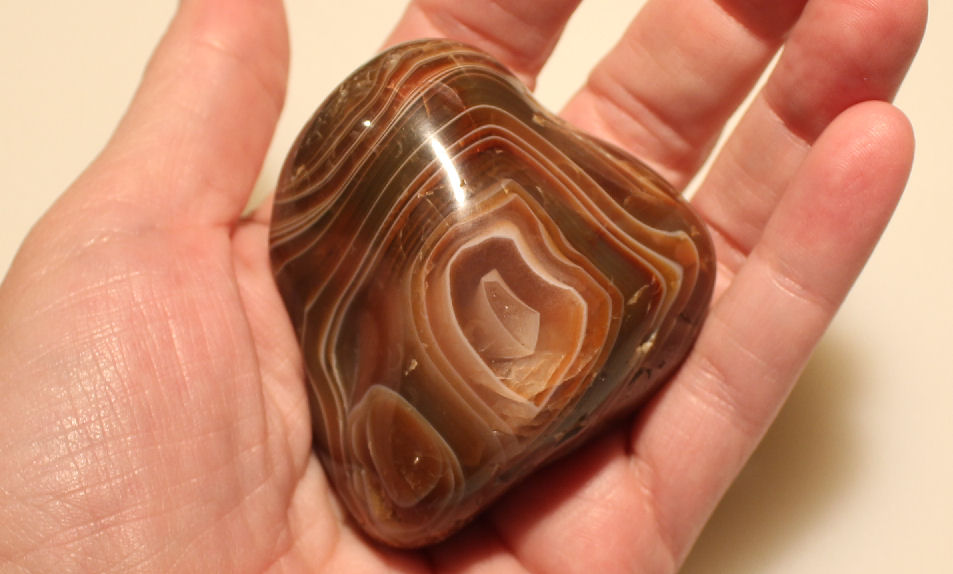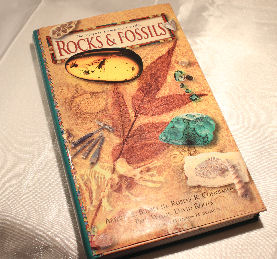I love to use Thundereggs as bases for many of my gem trees. Like the gem trees that I create, there are no two alike. The size, shape, and internal colors contained in these nodules compliment a wide variety of gemstones.
 Thundereggs were so named by Native American Indians. Legend has it that Thundereggs are the eggs of Thunderbirds (a legendary supernatural bird of power and strength) that lived in the Cascade Mountains in Oregon. It is said that the Thunder Gods living in the volcanoes in that region would throw the “eggs” at each other. From a rockhound point of view, Thundereggs are one of earths little treasure chests. Getting their origin as gas bubbles that formed in rhyolitic lava. Silica rich waters seeped into these cavities leaving behind layers of solid Jasper, Agate, Quartz, and Opal!
Thundereggs were so named by Native American Indians. Legend has it that Thundereggs are the eggs of Thunderbirds (a legendary supernatural bird of power and strength) that lived in the Cascade Mountains in Oregon. It is said that the Thunder Gods living in the volcanoes in that region would throw the “eggs” at each other. From a rockhound point of view, Thundereggs are one of earths little treasure chests. Getting their origin as gas bubbles that formed in rhyolitic lava. Silica rich waters seeped into these cavities leaving behind layers of solid Jasper, Agate, Quartz, and Opal!
Rockhound State Park, near Deming, New Mexico, is one of the only State Parks that actually welcomes rock pickers. You are allowed to collect 15 pounds per person per day! This state park has been well known to rockhounds for decades so finding quality material (thundereggs, jasper, and chalcedony) is quite a challenge. However, Perlite is still quite abundant.
There is a small museum and rock shop about two miles outside of the park that have thundereggs on display and have some for sale as well. A fun conversation with the curator (who was a partner of “the Geode Kid”) revealed the best hunting locations remaining in the Park. Taking his advice, we loaded up our gear and took the road less traveled.
 My husband, Bob, and I slowly worked our way up the forty-five degree washout that split the outcroppings at the top of Little Florida Mountains. About a third of the way up, remnants of broken thundereggs can be found. We were on the right track! Often ascending this mountain on our bellies (to prevent sliding), we frequently stopped to inspect slightly exposed thundereggs and brightly colored red jasper that were too beautiful to pass up.
My husband, Bob, and I slowly worked our way up the forty-five degree washout that split the outcroppings at the top of Little Florida Mountains. About a third of the way up, remnants of broken thundereggs can be found. We were on the right track! Often ascending this mountain on our bellies (to prevent sliding), we frequently stopped to inspect slightly exposed thundereggs and brightly colored red jasper that were too beautiful to pass up.
About two thirds of the way up the mountainside, I discovered a ledge and a sizable thunderegg still entombed in the rhyolite. Using a rock hammer, several chisels, and a small sledge I worked on this find for nearly 45 minutes. It took every ounce of energy I had to free this prize.
While taking a break to down some water and admire the view from this location, I heard Bob calling from above. He continued to climb while I worked on this one egg. He was all excited! I could barely make out his words, but I did hear him yell “jackpot!” I stashed my new find in my backpack and continued my climb to find Bob.
 At the top of the mountain, Bob had found an eight foot diameter hole containing a multitude of thundereggs. Apparently dug by a previous rockhound, by taking your fill and leaving plenty for the next adventurer, this person followed one of the rockhound’s code of ethics J. Following their lead, we dug out and inspected a number of thundereggs, packed what we wanted into our packs, and left plenty to be discovered by the next wanderer to the top of the mountain.
At the top of the mountain, Bob had found an eight foot diameter hole containing a multitude of thundereggs. Apparently dug by a previous rockhound, by taking your fill and leaving plenty for the next adventurer, this person followed one of the rockhound’s code of ethics J. Following their lead, we dug out and inspected a number of thundereggs, packed what we wanted into our packs, and left plenty to be discovered by the next wanderer to the top of the mountain.
We started our descent down the mountain along an easier path as the sun was getting low. Covered in dust, dirt, and sand our achy bodies longed for level ground while our hearts were filled and our grins couldn’t be wider!
NOTE: If you desire to take this adventure on your own, take a friend. Don’t climb this mountain by yourself. Also, visit in the cooler months. Rattlesnakes come out of hibernation when the weather warms up.


